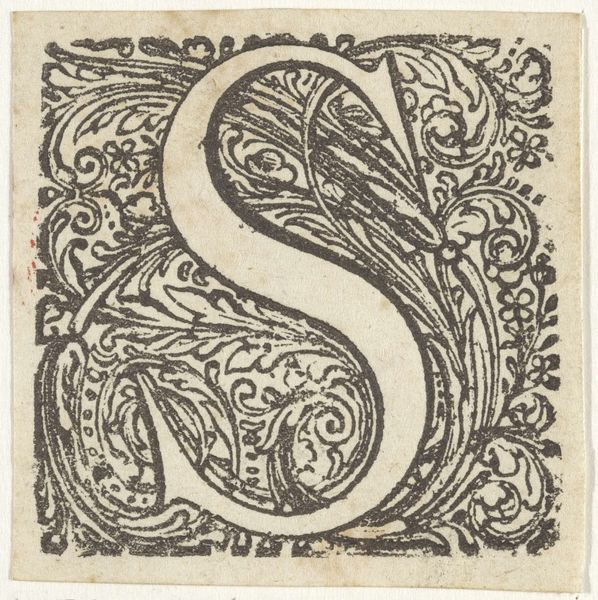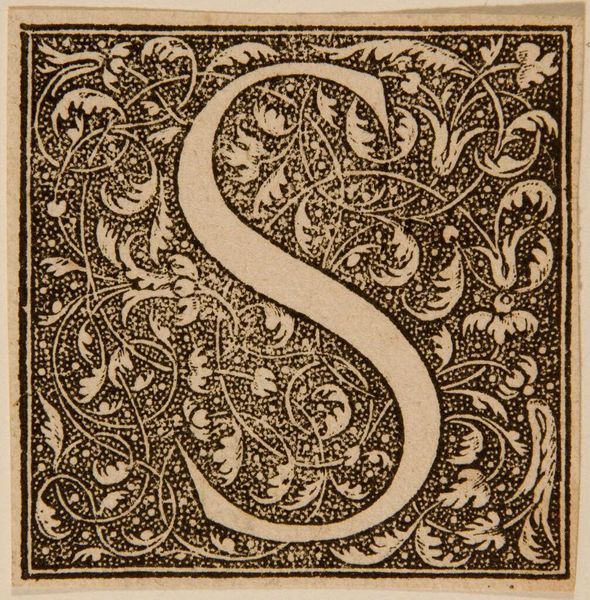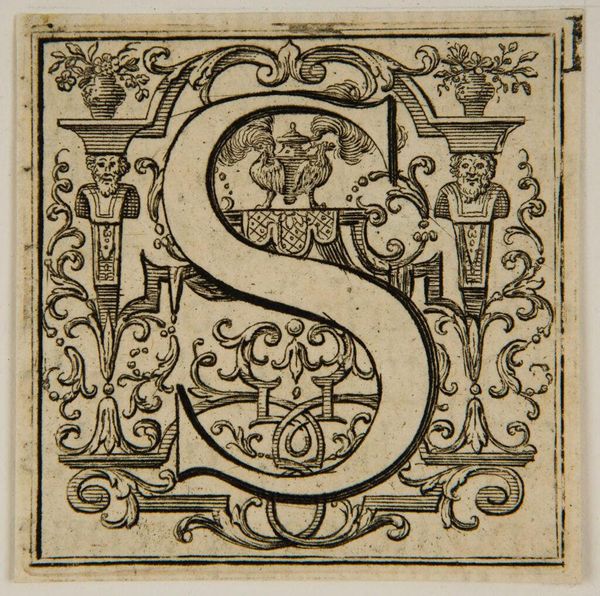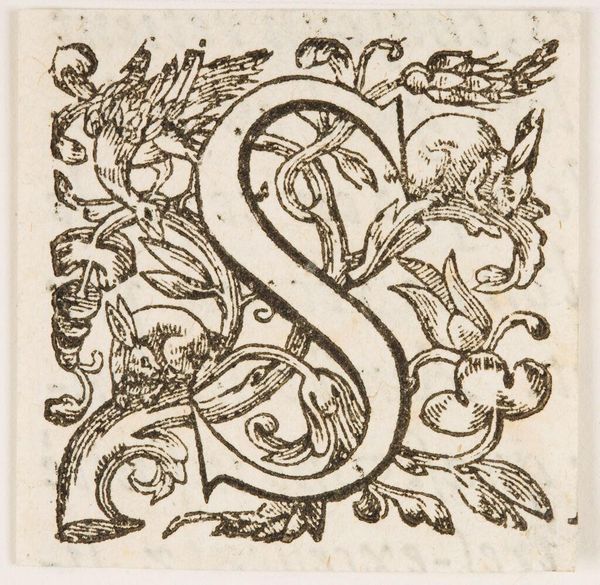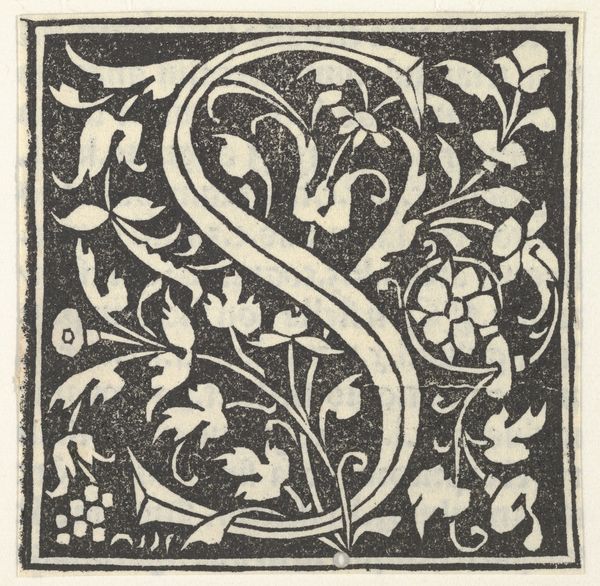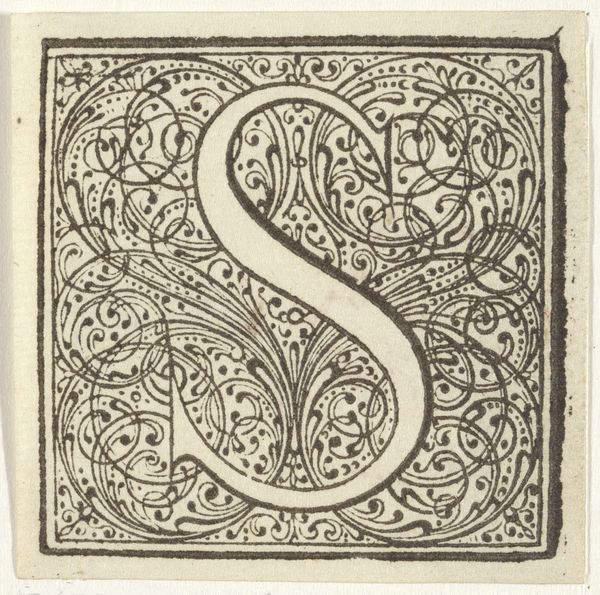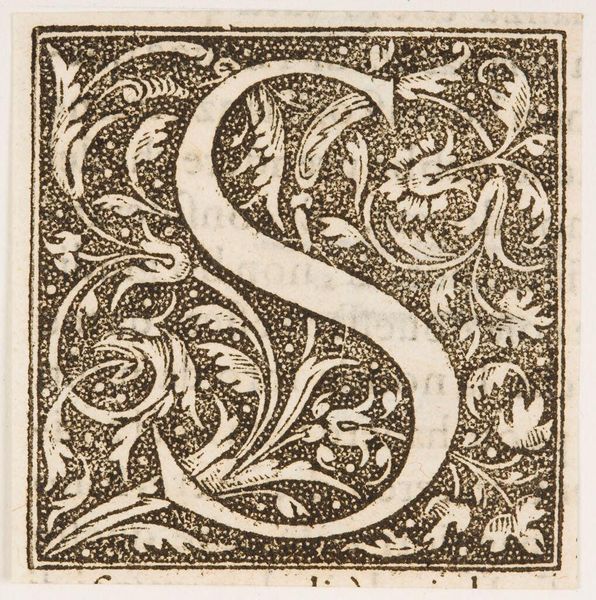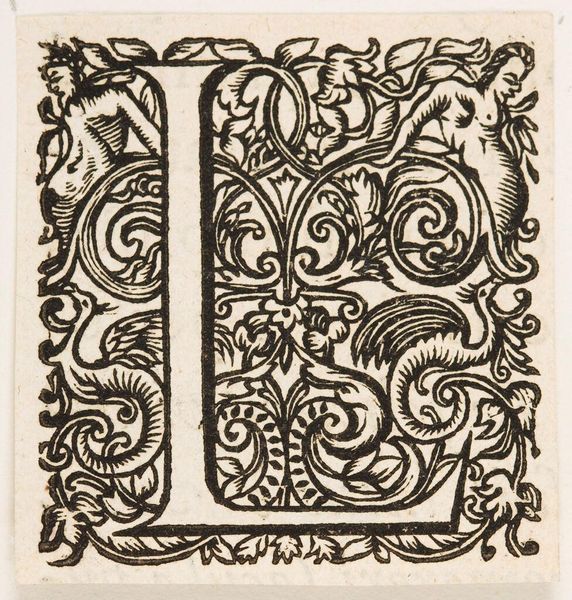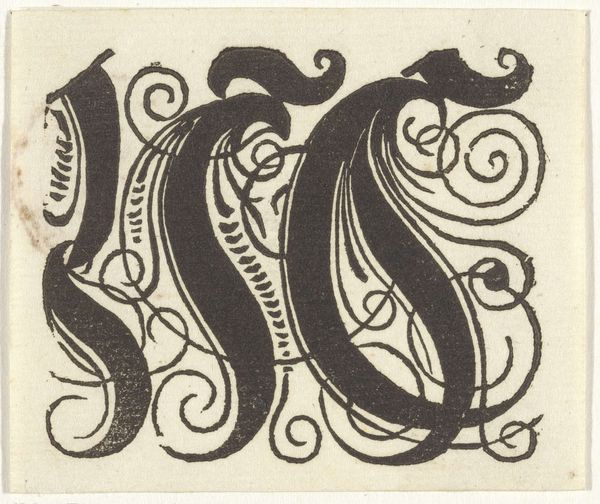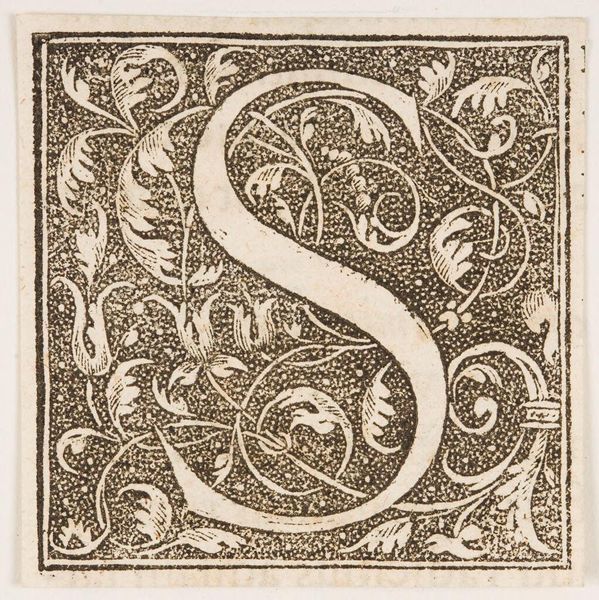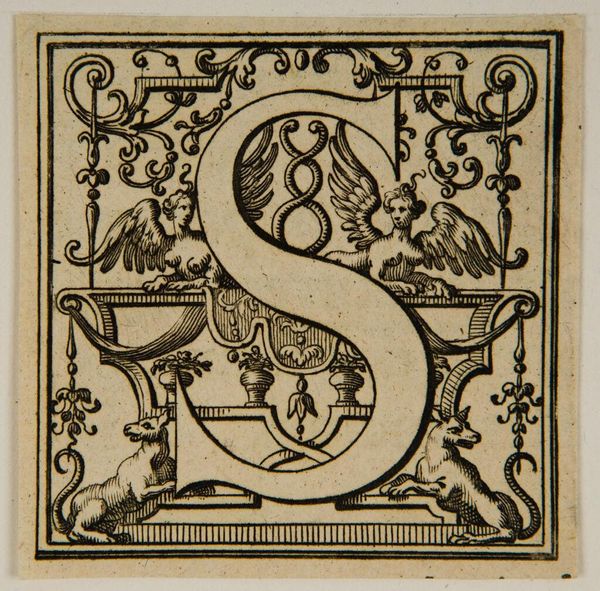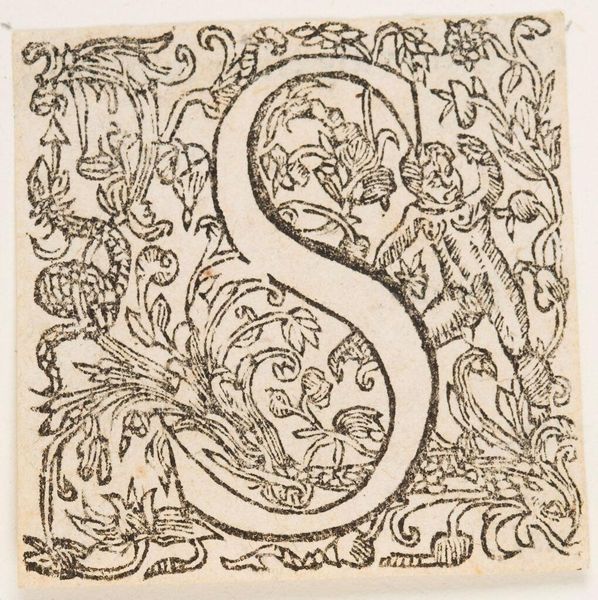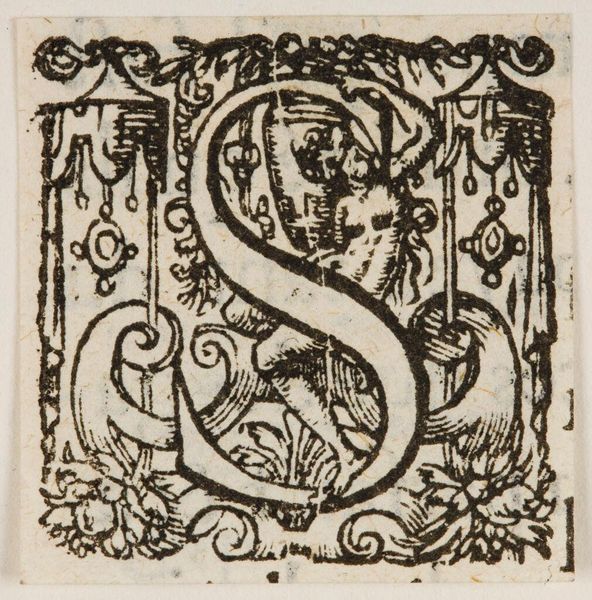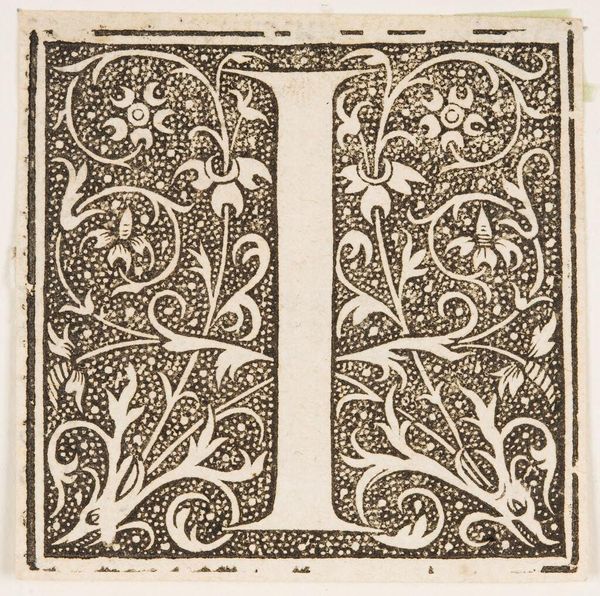
drawing, print, woodcut
#
drawing
# print
#
flower
#
11_renaissance
#
woodcut
#
line
Dimensions: height 45 mm, width 46 mm
Copyright: Rijks Museum: Open Domain
Curator: We have here an intriguing woodcut print from the 17th century: “Letter S in een omlijsting met bloemen”, created by an anonymous artist. The dense botanical design almost seems to suffocate the central letterform. Editor: It’s amazing how much detail they were able to carve into the wood! What does this say about the artist's intended audience and the function of these prints? Curator: Precisely. The intensive labor and craft involved signal that these images, beyond their decorative appeal, spoke to a rising merchant class hungry for luxury goods, but restricted to them in accessing the truly handmade. Woodcuts provided accessible imitations. This piece serves as a microcosm of complex socio-economic relationships – access and value creation are intrinsically connected to labor, skill, and consumerism. What can we say about that materiality? Editor: That makes so much sense! I guess the choice of a woodcut specifically means more than I initially realized, since prints weren’t precious like an oil on canvas could be. Were there particular workshops that specialized in such things, almost a factory of smaller handmade artwork, maybe? Curator: That is insightful. Absolutely. Guilds controlled much of the production and distribution, so a collaborative process of specialized labor would exist. How does viewing it through a lens of materiality inform your perspective on the work now? Editor: I now consider the labor-intensive aspect involved in the wood carving and printing process – all of which underscores how art-making has become increasingly democratized throughout the 17th century through a commercial market that's not limited to an elite circle. Thank you, I hadn't really thought of approaching this piece from that angle before! Curator: Indeed, recognizing art production through a materialist perspective opens the door to seeing artistic artifacts in relation to commerce, labor, and broader consumer habits, encouraging more socially aware insights that can inform how we view works of art.
Comments
No comments
Be the first to comment and join the conversation on the ultimate creative platform.
